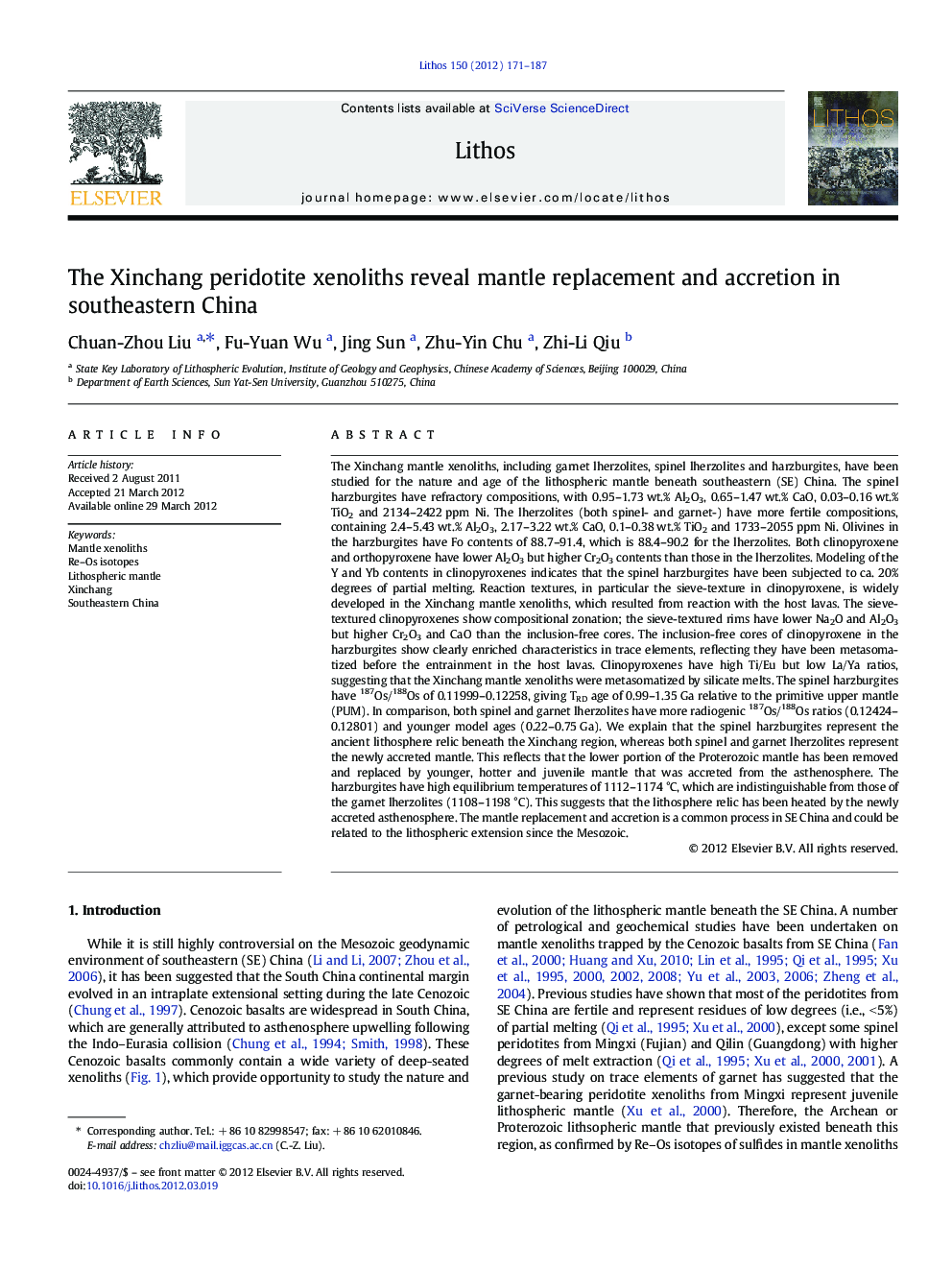| Article ID | Journal | Published Year | Pages | File Type |
|---|---|---|---|---|
| 4716496 | Lithos | 2012 | 17 Pages |
The Xinchang mantle xenoliths, including garnet lherzolites, spinel lherzolites and harzburgites, have been studied for the nature and age of the lithospheric mantle beneath southeastern (SE) China. The spinel harzburgites have refractory compositions, with 0.95–1.73 wt.% Al2O3, 0.65–1.47 wt.% CaO, 0.03–0.16 wt.% TiO2 and 2134–2422 ppm Ni. The lherzolites (both spinel- and garnet-) have more fertile compositions, containing 2.4–5.43 wt.% Al2O3, 2.17–3.22 wt.% CaO, 0.1–0.38 wt.% TiO2 and 1733–2055 ppm Ni. Olivines in the harzburgites have Fo contents of 88.7–91.4, which is 88.4–90.2 for the lherzolites. Both clinopyroxene and orthopyroxene have lower Al2O3 but higher Cr2O3 contents than those in the lherzolites. Modeling of the Y and Yb contents in clinopyroxenes indicates that the spinel harzburgites have been subjected to ca. 20% degrees of partial melting. Reaction textures, in particular the sieve-texture in clinopyroxene, is widely developed in the Xinchang mantle xenoliths, which resulted from reaction with the host lavas. The sieve-textured clinopyroxenes show compositional zonation; the sieve-textured rims have lower Na2O and Al2O3 but higher Cr2O3 and CaO than the inclusion-free cores. The inclusion-free cores of clinopyroxene in the harzburgites show clearly enriched characteristics in trace elements, reflecting they have been metasomatized before the entrainment in the host lavas. Clinopyroxenes have high Ti/Eu but low La/Ya ratios, suggesting that the Xinchang mantle xenoliths were metasomatized by silicate melts. The spinel harzburgites have 187Os/188Os of 0.11999–0.12258, giving TRD age of 0.99–1.35 Ga relative to the primitive upper mantle (PUM). In comparison, both spinel and garnet lherzolites have more radiogenic 187Os/188Os ratios (0.12424–0.12801) and younger model ages (0.22–0.75 Ga). We explain that the spinel harzburgites represent the ancient lithosphere relic beneath the Xinchang region, whereas both spinel and garnet lherzolites represent the newly accreted mantle. This reflects that the lower portion of the Proterozoic mantle has been removed and replaced by younger, hotter and juvenile mantle that was accreted from the asthenosphere. The harzburgites have high equilibrium temperatures of 1112–1174 °C, which are indistinguishable from those of the garnet lherzolites (1108–1198 °C). This suggests that the lithosphere relic has been heated by the newly accreted asthenosphere. The mantle replacement and accretion is a common process in SE China and could be related to the lithospheric extension since the Mesozoic.
► We present geochemical compositions of the Cenozoic Xinchang mantle xenoliths from southeastern China. ► Sieve-textured clinopyroxene was produced by reaction with the host lavas. ► Harzburgites with old Os ages represent the ancient lithospheric relic. ► Both spinel and garnet lherzolites with juvenile Os ages represent the newly accreted mantle from the asthenosphere. ► The ancient mantle beneath southeastern China has been thinned and replaced by younger, hotter mantle.
